Great Loop paddler discovers gems of the Chesapeake
When Peter Frank, a 23-year-old solo canoeist, alerted SpinSheet that he was passing through the Chesapeake Bay while attempting to paddle the Great Loop, we wondered who would undertake such an ambitious journey and why.
Peter started his expedition in Escanaba, MI, on June 27, 2024 and anticipates the entire trip will last 17 months. Here he shares in his own words what inspired him, some of his challenges and triumphs so far, and his thoughts on the waterways and people of the Chesapeake Bay.
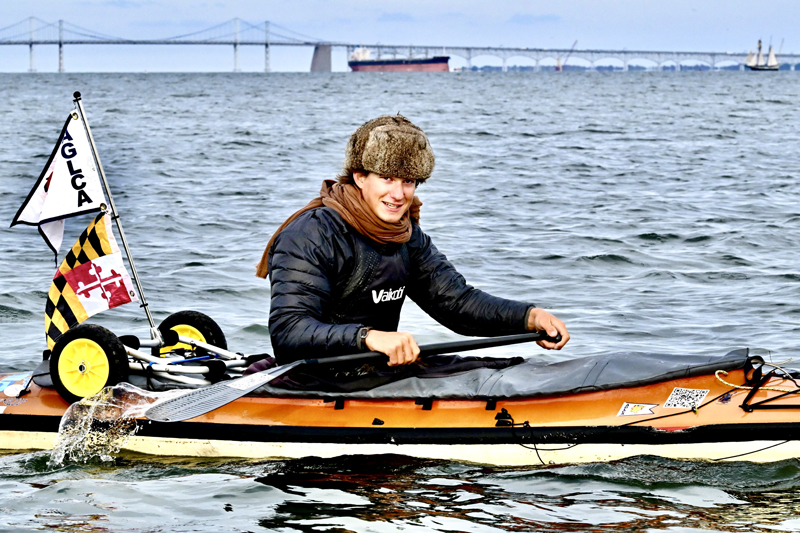
What inspires a 6000-mile expedition in a canoe?
The expedition was an evolution over time, as I was learning and growing through traveling, I gradually discovered what I enjoyed the most as I traveled. I spent a couple years doing expeditions on bicycles, unicycles, and kayaks and did some hitchhiking out west, but nothing struck me quite as much as canoeing.
One expedition I took in 2022, I was dropped off at the headwaters of the Mississippi River in Lake Itasca, MN, and canoed the entire Mississippi River to the Gulf of Mexico, New Orleans. Once there I decided to keep going and ended up making it as far as South Carolina. The entire journey was 4700 miles and spanned more than 11 months—that I accomplished between the age of 20 and 21.
It was around this time that I had discovered what the Great Loop was, a 6000-mile waterway circumnavigation of the eastern United States. I took eight months off traveling, the longest I had stopped in three years, did some extensive planning, and decided to 'try again’, to do the Loop. This time, without stopping, despite having completed over half of the Loop already, which will mean I'll eventually intersect my previous routes through Florida and the inland rivers.
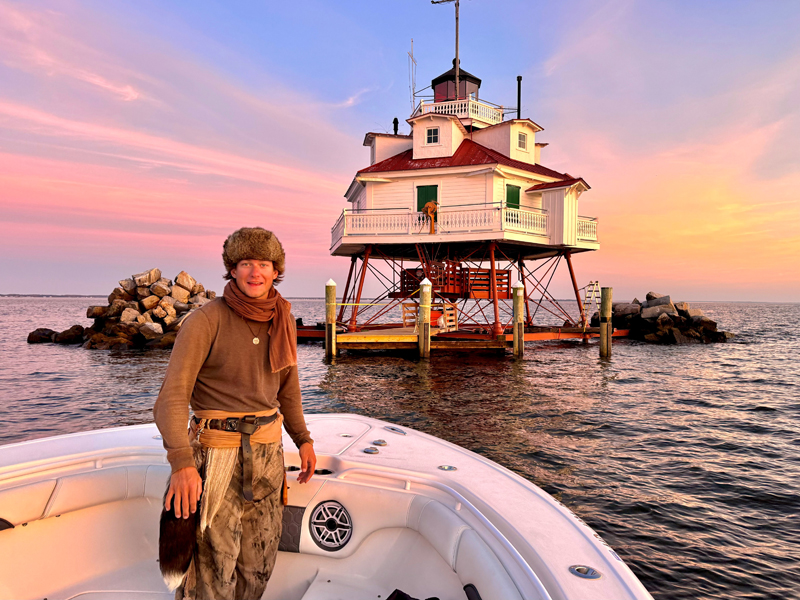
Welcome to the Chesapeake!
As I write, these are my first days in the Chesapeake, but the people of the AGLCA (America’s Great Loop Cruisers’ Association) have told me about the Chesapeake being the best part of the entire Loop. They say, “You can stay here for a year and still miss out on so much.”
I've found this to be true. Although I must make distance every day I can, the Chesapeake has so many hidden gems that make you want to sit and explore for weeks on end. On my first day in Annapolis, I took a tour on the Woodwind, a 70-plus-foot three-masted schooner, and I was put behind the wheel of a sailboat for the first time in my life. It was an exhilarating experience that I'll cherish forever.
Thrilling moments like this are of an abundance along my trip, and more-so since I've entered the Chesapeake. The people are different, in ways that almost make you feel at home as you're greeted by strangers who wish for nothing more than to help you along your journey through life. I'm eager to explore what more this segment has to offer in the coming weeks before my departure into Virginia and the Carolinas heading south.
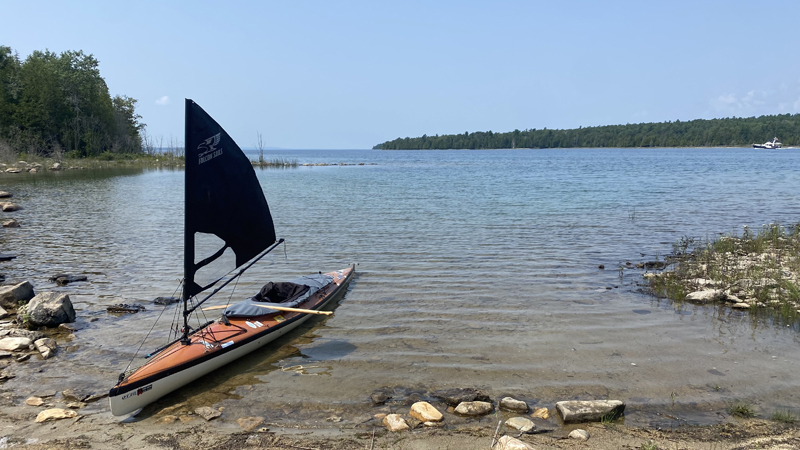
Adding a sail to the canoe.
I've rigged a carbon fiber Falcon Sail to my canoe, which is a six-foot mast and 1.0-meter sail. I used this sailing rig through the Great Lakes, but once I reached the inland rivers leading down to the Chesapeake, I put it away to be used at a later segment. Once I hit the Chesapeake, the tides I noticed were significantly less intense than the Hudson Valley and Delaware River, where tides are almost eight feet in elevation and can flow up to five knots or more.
The Chesapeake however, experiences tides as little as six inches. These made for perfect canoe sailing conditions, where I now have my rig set up again, and am sailing in favorable conditions. I enjoy the sail very much, it hasn't yet taken over as my main propulsion, but it's been nice to have an aid of sorts that takes off some effort from my paddle strokes. The extra propulsion has helped me paddle farther on days I've used it and kept much of the strain of canoeing long distances off my shoulders and back, allowing me to travel more sustainably each day. Sailing also has an incredible educational impact, I've learned so much of my own capabilities, the capabilities of my canoe, and the patterns that make up our weather cycles. It's given me more confidence in my own abilities and I'm now a more weathered sea man because of this valuable tool.
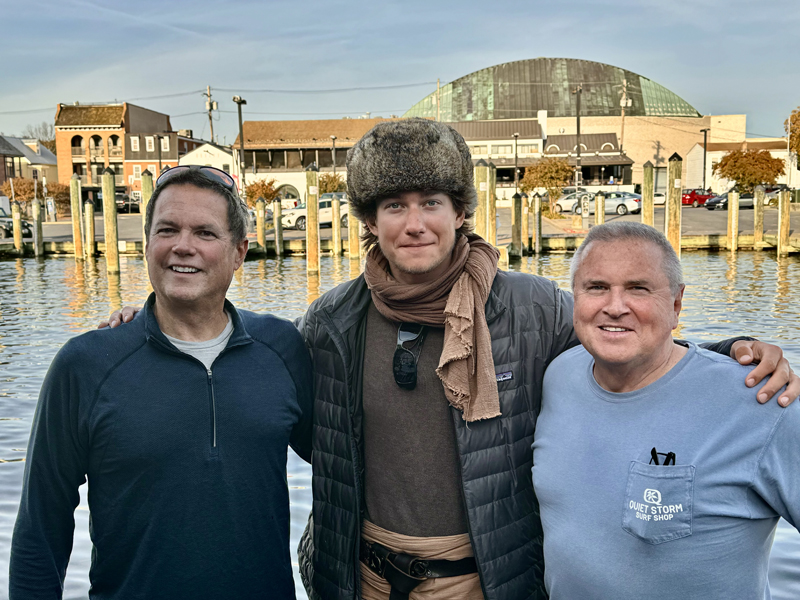
Kind and wonderful people along the way.
I am hosted quite a bit by people who follow my travels online (hotels aren't sustainable for an expedition this long, so I sleep in a tent most nights). Through my documentation I'm able to meet so many kind and wonderful people with unique stories and life endeavors. I'm writing this right now from the home of David Sites, a photographer in Annapolis, MD, who's done a lot of photography work for the magazines in the area. (Editor’s note: David Sites, who frequently shares his images with SpinSheet and won both the PropTalk and SpinSheet cover contents in 2024, is a leading member of the SpinSheet Century Club.)
Thanks to people like David, I'm able to recharge equipment, do laundry, and have a hot shower and warm bed; these are things we take for granted in modern society as they are a standard to daily necessities, but for me, they are things I'm not able to obtain on my own while living out of a canoe.
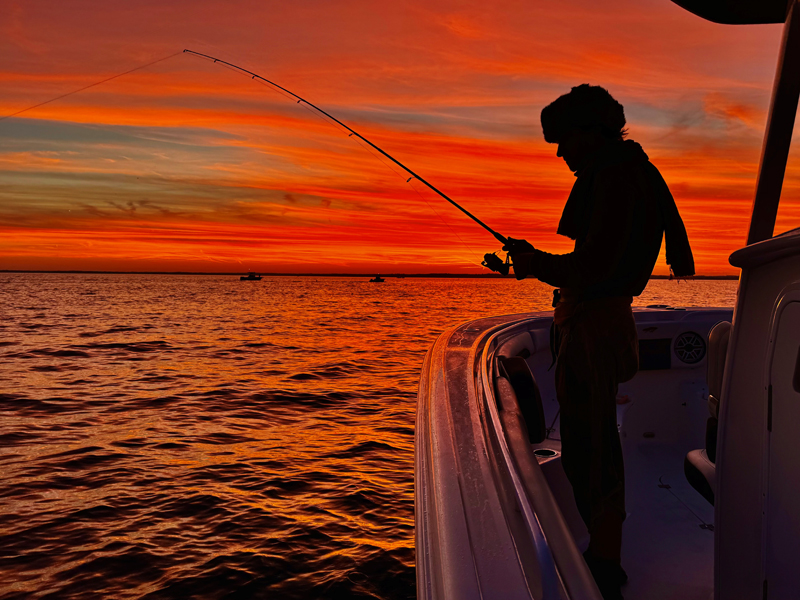
A little bit of fishing.
In the first expeditions I used to carry a casting net to catch fish, which was first gifted to me in 2022 on the Mississippi River in St Louis. I mastered the net and fed myself for many nights in the year I was traveling. The net had also come in handy during my circumnavigation when I had River, a four-month-old Siamese kitten that I had rescued in the dead of winter during one of the coldest spells that year. River lived with me in the canoe for six months, and was often fed from the pin fish in Florida that I would catch with my casting net. River now lives with my parents in Michigan. I now carry a fishing pole and tackle. Through Canada I would catch walleye and smallmouth bass that I'd often cook over a fire. Some nights, where the wood wasn't plentiful on the rock masses that make up most of Ontario, I'd use a bottle of soy sauce that I carry with me and eat the fish raw on the beach overlooking the sunset.
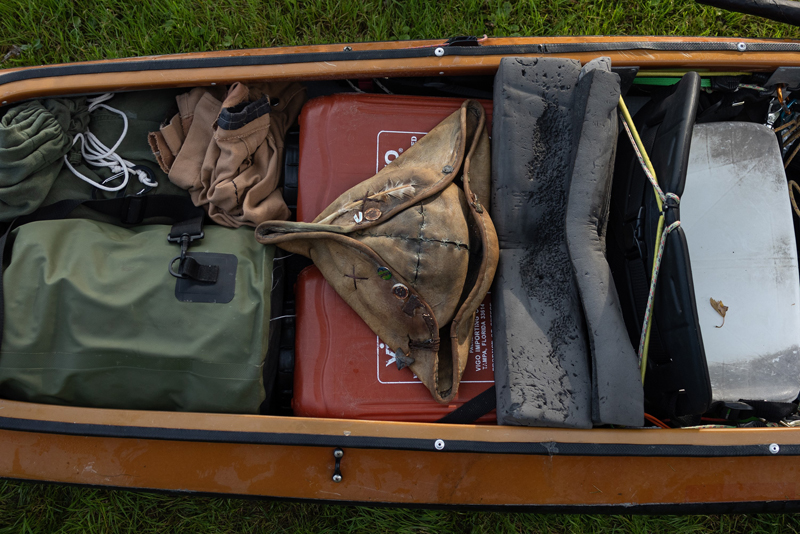
More about the canoe.
I acquired my canoe in Florida, where I traded my old canoe (the one on which I did the Mississippi River). I circumnavigated Florida in it and learned of the history of Verlen Kruger.
My canoe is a 1982 Sawyer Loon decked canoe, designed and built by Verlen Kruger in the late 1970s. Although it has a decking, it was made as a canoe with a raised seat, and entirely hollow shell, much different than today's modern sea kayak designs. The cockpit is 82 inches long, and beyond that is a decking designed to take on harsh weather conditions for long expeditions. The ’70s was before kayaking took over the industry as a popular recreational activity, so everything before the 1980s was considered a canoe. In modern terminology, my canoe would be referred to as a ‘hybrid.’ Verlen Kruger often said, “It's neither a kayak or a canoe, it's neither a duck nor a goose, we call it the Loon.”
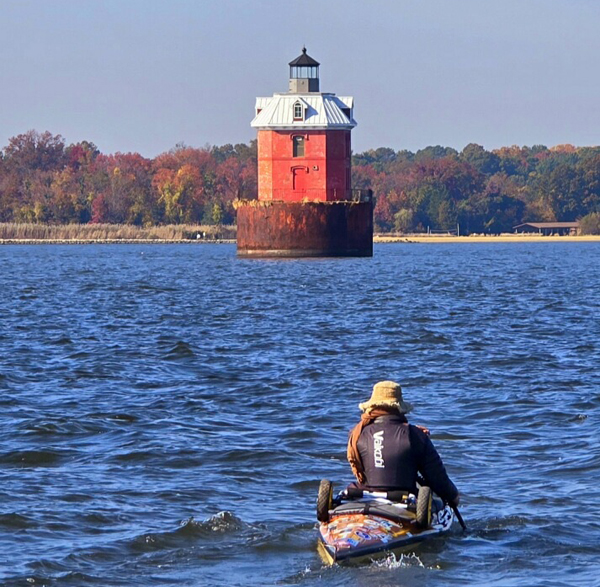
Honoring the history and legacy of great explorers.
Verlen was a canoe expeditioner who had documented over 100,000 miles in a canoe in his lifetime. He died in 2004. Verlen had also documented two of the longest canoe expeditions ever taken in human history, one of which was 28,000 miles through North and South America that spanned over three years. The beginning of his odyssey took him through the entire Missouri River, and then the circumnavigation of the eastern United States, backwards, with his son, Steve Landick (youtube.com/watch?v=9aSY9UKIskw).
This was only the beginning of their journey, but regardless, they were the first and only people, to the best of my knowledge, who have ever paddled the Great Loop backwards (clockwise), meaning that 25 percent of the Loop will be traversed against the current through the 1600 miles of rivers that are part of the 6000-mile route. Never, to the best of my knowledge, has this even been attempted in the reverse route in a non-motorized paddle craft in the last 40 years. I have now acquired one of his canoes, the same canoes in which they did their odyssey 40 years ago.
Part of this expedition for me is to honor Verlen's legacy, another aspect is to just simply see if it's still possible. When I purchased the boat, it was bald, clean and untouched. I am the third owner of it, and I put extensive work into the canoe to restore it the best I could. I'm only attempting this small segment of their total expedition, due to my reach, finances, and experience level but if there's any boat that can do a journey like this, this is the one.
There was also a man, Stephen Brede, who circumnavigated the Great Lakes, and he had done it in a Loon as well. These boats, among the others that Verlen had designed, I believe were some of the greatest expedition canoes ever made at that time.
There's a certain level of honoring the history of great explorers by using their tools, replicating their voyages, and following in their footsteps. There's a lot of value in studying the efforts of these men and women of old and can be traced back to Ferdinand Magellan and his circumnavigation of the planet in 1519, and even long before then.
The most challenging aspect of the journey so far.
My travels and how far I'm able to travel are in the hands of Mother Nature, so my days must be planned precisely with the weather. I've seen tornados and waterspouts. I've faced the backdrafts of hurricane weather in Ontario, Canada, which led to five days marooned on an island. I was given only two days to prepare for that weather, in the middle of the remote Georgian Bay with no towns in my vicinity. I was rationing food for 125 hours, no cell reception, and planning my passage to my next restock after the winds had subsided. This was early August. Now, in the middle of October, the seasons are changing, but God has surely not run dry of smiles. It looks to be another late winter which I'm more than thankful for. Over the last few weeks, I've been tenting in freezing temperatures at night, and canoeing in 45-degree weather during the day periodically. I still believe I'm ahead of the coming winter if I don't dally.
Provisioning strategy and preparations.
In preparation for this expedition, I spent several months dehydrating and vacuum sealing my own meats, fruits and potatoes. I find self-preserving and processing your own food is significantly more financially sustainable and healthier than purchasing pre-packaged processed food from the market. My provisions have lasted me through the first three months. Self-preservation of food requires a lot of tools and time, things that I don't have while I'm on the actual trip, so I now live off of fruit, minimally processed dehydrated beef, and one ingredient—dehydrated potatoes—that I purchase online and have sent to me as a parcel to upcoming post offices.
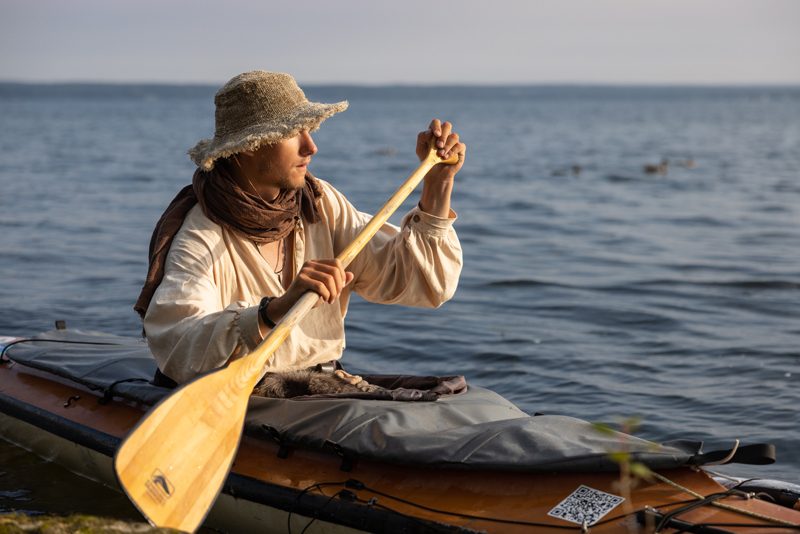
Can you share an event or incident that would surprise our readers?
When I was 14 years old, I was run over by a car, hiding in a leaf pile. I broke 14 bones and shattered my L1 and L2 vertebra on my spine. I was about a centimeter from being paralyzed for the rest of my life. Being a young teenager and having your entire life’s trajectory changed at such a young age has had significant effects on my psyche, as you can imagine.
I spent only a month in a wheelchair but a year and half in physical therapy, and while I was recovering in the hospital, an organization called The Beacon House had stepped in and offered a home for my family to stay while I was recovering in the hospital. Thanks to their efforts, I was able to see my parents every day through my recovery, as we didn't live close to the hospital.
Much of my childhood was robbed from me due to the restrictions of the incident, but I still felt in my heart I had a purpose for this second chance at life. It took a long time, six years almost, before that calling began to burn in me like a fire. I didn't fully understand it yet, but I followed that desire to live a more fulfilled life. I sold everything I owned, including my car and computer, and quit my job. I took what little money I had, purchased a 36-inch mountain unicycle, rigged it up with everything I thought I would need, and rode it 2400 miles across the United States raising over $34,000 for The Beacon House in the process.
This instilled in me my sense for adventure, and I haven't stopped since. Even when I'm not traveling, it's all I can think about it. I still struggle to this day with chronic back pain from the incident, but through everything, the expeditions are my form of worship. It’s one of the few ways I'm able to show my appreciation for being alive and still being able to walk. I want to truly live a life that I've been gifted, and despite the pain, the struggles, and sacrifices, this is my gratitude; a life well lived.
Sharing a journey of self-discovery.
The world needs explorers, as many people don't have the ability to undertake such adventures, so in a world where everything we can physically navigate under our own efforts has already been mapped and navigated, the one thing we can truly explore is our mind. These trips are a journey of self-discovery, and now thanks to social media and publications such as SpinSheet, I'm able to share them with people who dream of them but are unable to make the trip themselves.
Follow Peter at whereispeterfrank.com and on Facebook and Instagram where he documents his journey.




